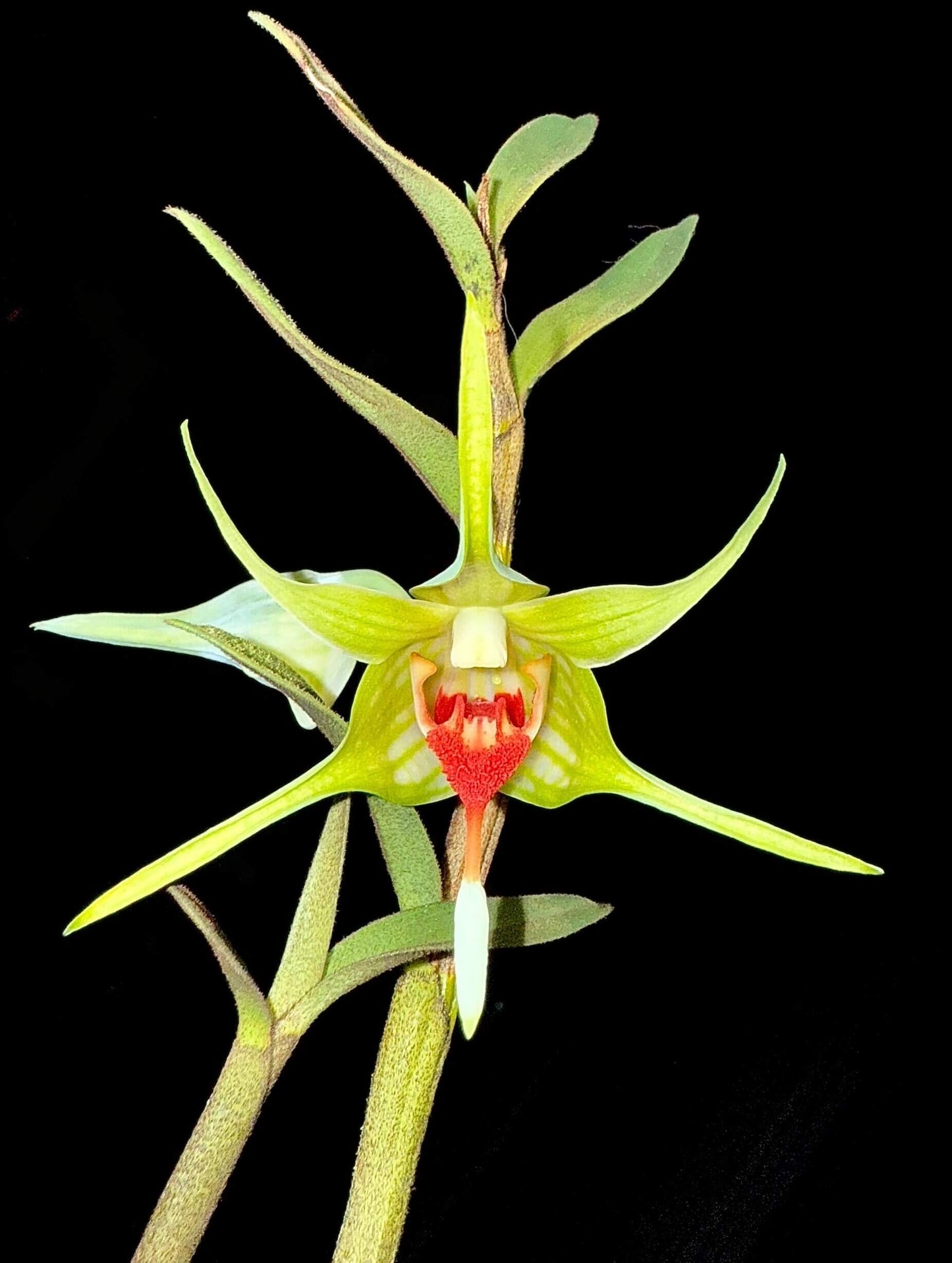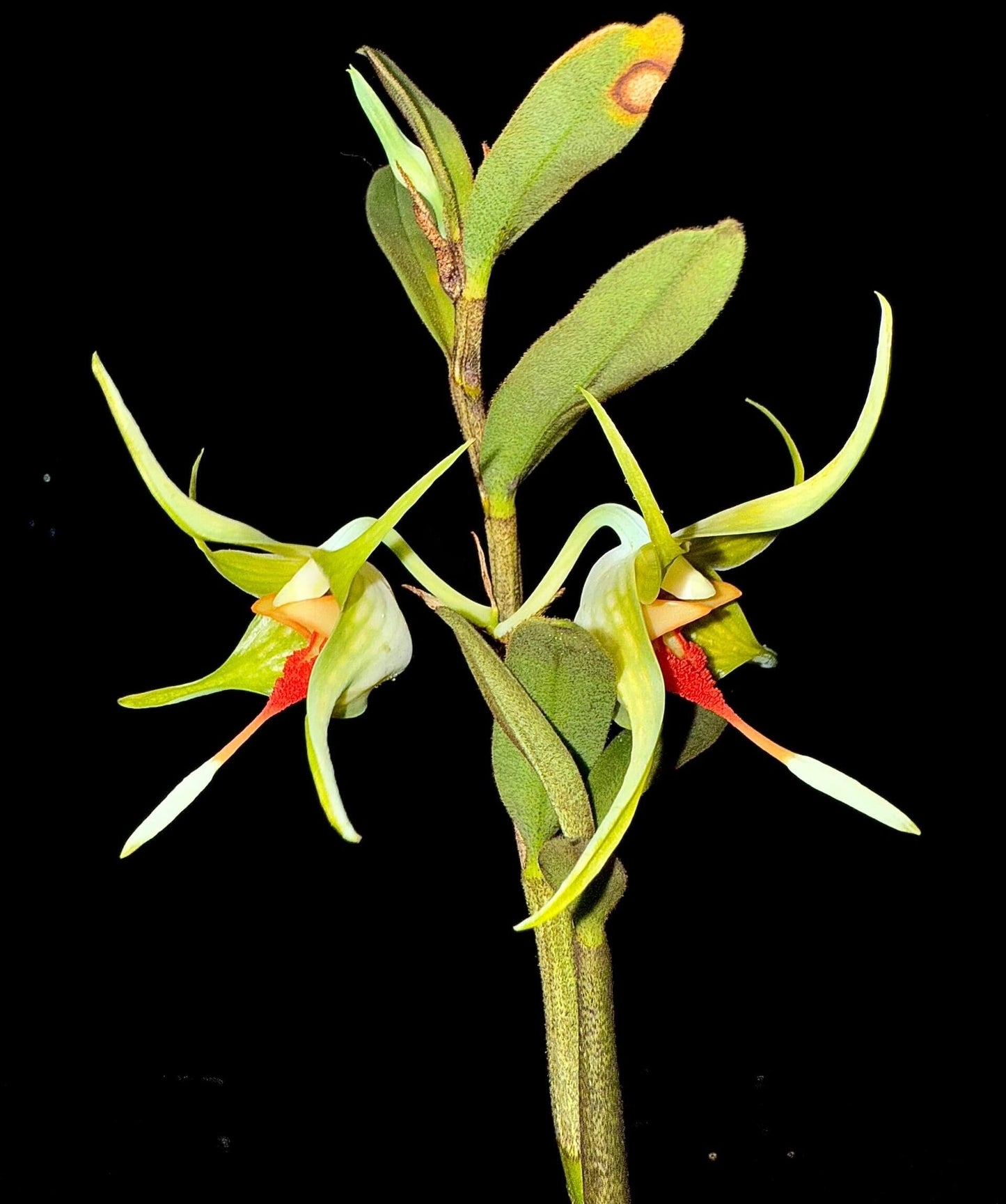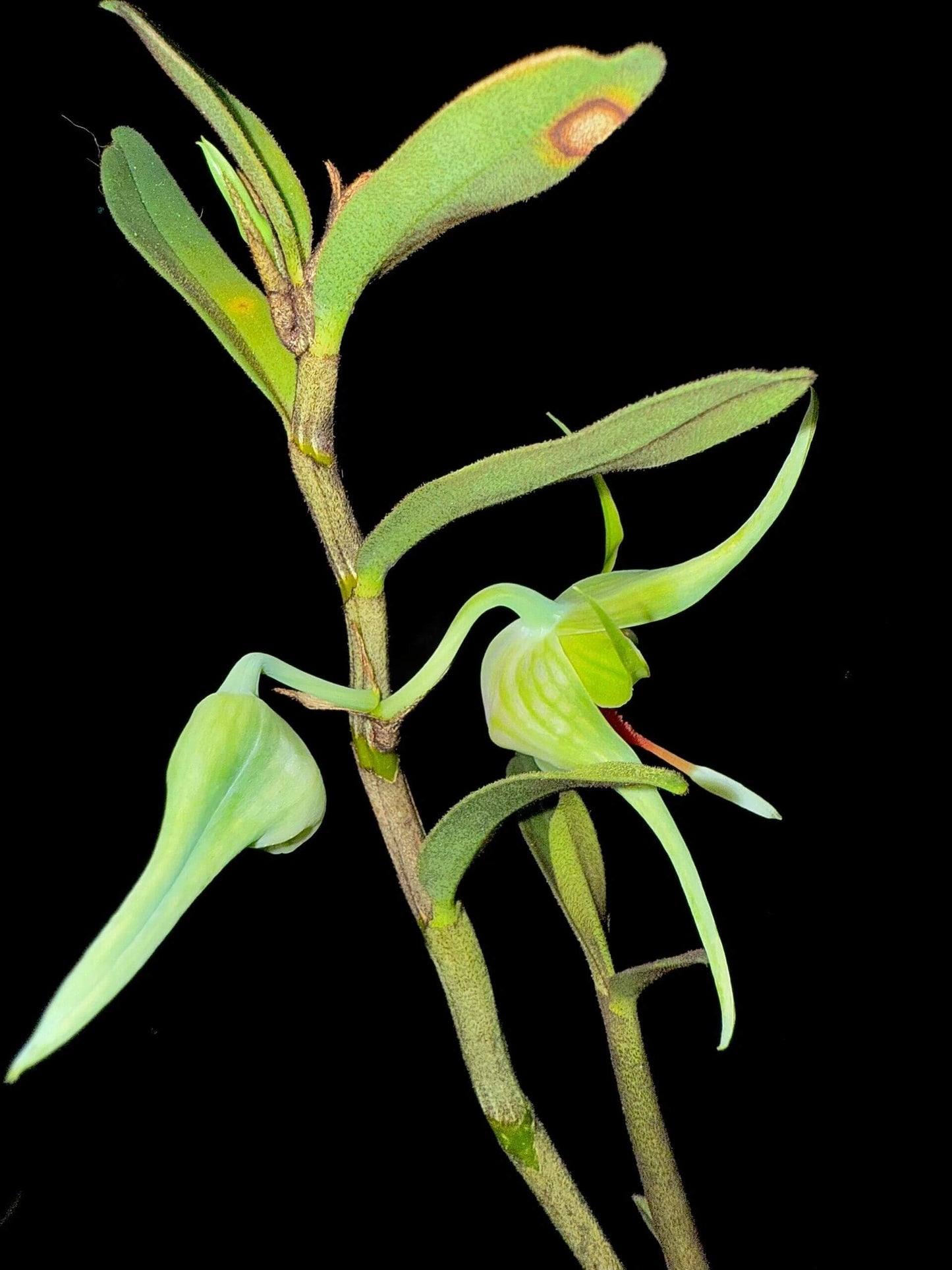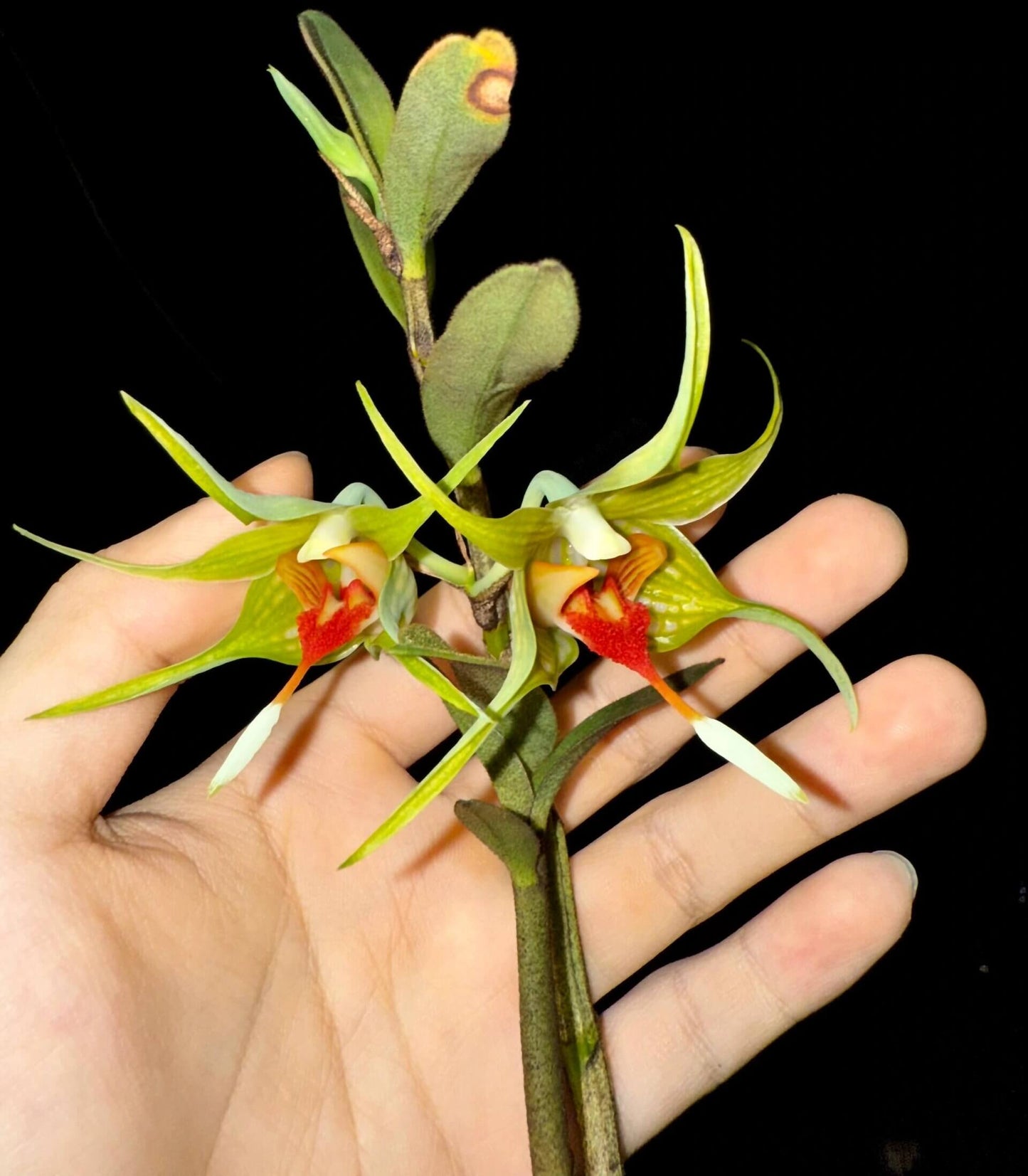Begin With Plants
Dendrobium tobaense
Dendrobium tobaense
Couldn't load pickup availability
Dendrobium tobaense is a petite epiphytic orchid native to northern Sumatra—particularly around Lake Toba—thriving in montane pine and fir forests at elevations ranging from about 1,000 to 1,500 m. The plant grows sympodially, with cylindrical pseudobulbs reaching 24–30 cm tall and bearing 8–9 oblong-elliptic leaves (3–8 cm long), smooth above and covered with fine black hairs beneath—including on the leaf sheaths.
Features:
-
Flower: Each bloom measures around 7.5–8 cm in diameter. The petals and sepals are pale green with a distinctive net-like green vein pattern, ending in slender, pointed tips. The lip is robust and fleshy, vividly orange-red with fine lines and textured calli.
-
Inflorescence: Short and emerges at the base of the leaf sheath, often producing successive single flowers during fall.
-
Growth Habit: Compact and warm-to-cool growing; an intriguing member of the Formosae (Nigrohirsute) Dendrobium section.
-
Bloom Duration: Each flower may last approximately 40 days.
Care Tips:
-
Light: Provide bright, indirect light—ideally around 22,000–32,000 lux. Avoid direct sun, especially midday.
-
Temperature: Favorable daytime temps range from 21 to 23 °C, with nighttime drops to 13–14 °C, creating a beneficial 7–9 °C differential.
-
Humidity: Maintain a high humidity level of approximately 75–80% throughout the year.
-
Watering: Keep the plant constantly moist, yet allow slight drying between waterings. Increase watering during warmer seasons; reduce mildly in winter—but do not let the plant fully dry out.
-
Substrate / Mounting: Thrives mounted on cork or tree fern, or potted in a coarse, well-draining medium. Good air movement and drainage are essential.
-
Fertilizer: Regular feeding at half strength, weekly or biweekly with a balanced orchid fertilizer; increase phosphate before blooming, then use higher nitrogen during vegetative growth.
-
Rest Period: In winter, slightly reduce water and fertilization. Resume normal care when new growth appears in spring.
-
Repotting: Best done every 2–3 years or when medium breaks down. Ideally timed as new roots emerge (typically end of winter).
-
Resilience: Fairly forgiving, rebounding well even after stress—though abrupt changes like poor timing of repotting or temperature spikes may set it back temporarily.
Share







